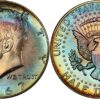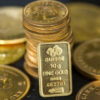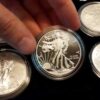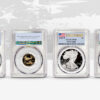- Empty cart.
- Continue Shopping
Evaluating Old Coins & Paper Money

What’s the significance here?
Essentially, there are four unique kinds of “significant worth” for coins and bills:
- Book (or “list”) esteem
- Purchase cost
- Retail esteem
- Discount esteem
Book esteem is the normal retail cost of numerous dealers for a specific coin or banknote. At the end of the day, the cost at which the normal merchant sells it. This cost is usually alluded to as the “book esteem” since it shows up in distributed books like standard lists of world monetary forms.
Purchase cost is the value that a seller would pay you in the event that you sold them your coin or bill.
Retail esteem is the cost for which a seller would offer a coin or bill to you. Thus, assuming a seller needs to remain in business, they normally offers lower purchase costs than retail costs.
Discount esteem is the cost for which a vendor would offer a coin to another seller. Discount worth can likewise be a limited value that a vendor would acknowledge from a purchaser who is buying in enormous amounts.
Components That Affect Value
There are a few factors that impact the worth of a coin or bill:
- Extraordinariness
- Request
- Condition or Grade
Extraordinariness additionally includes the quantity of those coins or bills that are still around today. Extraordinariness likewise includes the quantity of those coins or bills that are still around today.
Request fluctuates as per the prominence and accessibility of a coin or bill:
- The interest may be higher or lower in various spaces of the world, or during various years.
- To see interest in real life, check out the costs on eBay’s coin and paper cash page – when more individuals need to purchase a specific thing (an appeal), the cost regularly goes up.
Condition or Grade:
- Most value guides give esteems for a few grades.
- Coins and bills can grade from “mint” or “uncirculated” (no indications of wear) to “poor”.
- At the point when a bill is in mint condition, it is worth more than a similar bill in a helpless condition.
- There are explicit guidelines that characterize what “mint,” “poor,” and different grades mean:
- In case you’re keen on coins, see the American Numismatic Association’s Coin Grading pamphlet.
In case you’re keen on paper cash, allude to the International Bank Note Society’s reviewing guidelines
In the event that a currency is too harmed to even consider having esteem as a collectible, its metal substance (the measure of gold or silver in the mint piece) may have “basal” esteem. As per Roderick Hughes’ Official Know-It-All Guide, Coins, you can discover the worth of the metal on the off chance that you:
Increase the heaviness of the coin by the rate of “fineness” of the coin (the level of the coin that is gold or silver). This will build up the amount of valuable metal you need to sell.
Increase the aftereffect of the principal computation by the current cost of the valuable metal in the coin.






